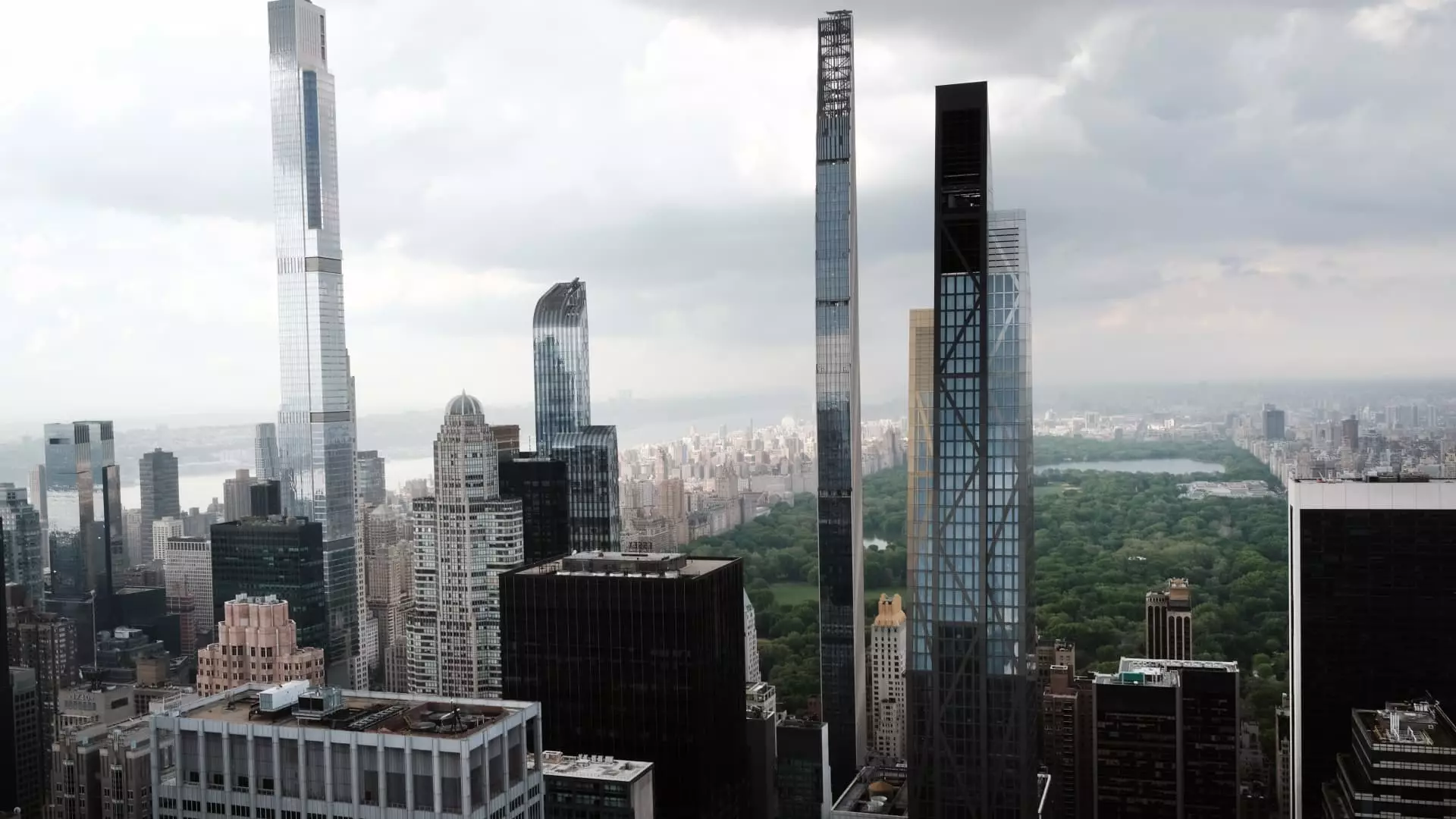The Manhattan real estate scene has witnessed a remarkable resurgence, with apartment sales soaring by an astonishing 29% in the first quarter of 2023 compared to the same period last year. As the economy battles through volatile stock markets, affluent buyers are opting for tangible assets, viewing real estate as a safer investment avenue. Reports from industry stalwarts like Miller Samuel and Douglas Elliman reveal a staggering increase in total apartment sales value reaching $5.7 billion—a 56% climb from the previous year. This trend signals not just a rebound but an evolving mentality among the wealthy towards real estate, especially in times of economic unpredictability.
A Dive into the Ultra-High-End Market
The heart of this surge resides within the luxury segment of the market. Notably, transactions for apartments exceeding $5 million surged by 49%, while those coveted ultra-high-end properties priced at $20 million and beyond experienced their strongest start of a year since 2019. The wealth elite seem undeterred by rising mortgage rates, largely due to their preference for cash transactions—accounting for a staggering 58% of sales in the first quarter. For the upper echelon of real estate, with properties priced at over $3 million, this figure spikes to about 90%. This movement reinforces a broader narrative: in times of economic flux, tangible assets like luxury apartments not only provide refuge but also convey a sense of stability and wealth preservation.
The Mid-Market Fumble
While the elite flourish, the mid-market segment—properties priced between $1 million and $3 million—suddenly finds itself in choppy waters. With contracts for these apartments dwindling by 10%, it seems that the wealth divide is only widening as the top tier continues to dominate. Interestingly, the lower end of the market, for properties priced between $500,000 and $1 million, shows more resilience. This bifurcation may indicate that while the ultra-wealthy are investing heavily in Manhattan, those with moderate means are grappling with lingering uncertainties and potential financial strains, creating a stark contrast in market performance.
Macro and Micro Forces Driving Change
The dynamics of Manhattan’s real estate market are influenced by a complex interplay of macroeconomic and individual behaviors. Historically intertwined with the performance of the stock market, the recent real estate boom appears to stand apart from the fluctuating equities. The uncertain performance of Wall Street has inadvertently rendered properties in Manhattan even more appealing to affluent buyers seeking stability in hard assets. This phenomenon is further exacerbated by corporate mandates encouraging a return to physical offices, luring previously hesitant buyers back to the city. The so-called “boomerang wealthy,” those who fled New York for pandemic havens in places like Florida, are now attempting to reclaim their urban lifestyles, adding a fresh wave of demand.
The Great Wealth Transfer: A New Demographic of Buyers
Adding fuel to the fire is the ongoing “great wealth transfer” as trillions of dollars are passed down from the baby boomer generation to their heirs. This shift in wealth has birthed a new demographic: young buyers empowered with trust funds and family office resources, keen on making their mark in the real estate market. Real estate agents have noted a surge in activity from family offices, investing heavily in properties with a long-term view of generating both legacies and wealth accumulation. This trend indicates a shift towards more strategic investments by the wealthy, who increasingly recognize real estate as a crucial component of wealth management.
Future Outlook: Caution within Optimism
Despite these positive indicators, it is essential to note that sales figures from the first quarter primarily reflect contracts negotiated in the months prior—not necessarily an indication of ongoing market stability. Analysts suggest that the initial slowdown in March, coupled with ongoing economic uncertainties, may impact future performance. However, early signs show strong contract activity for luxury apartments exceeding $10 million, hinting that demand remains robust. As Pamela Liebman of Corcoran aptly puts it, the Manhattan market is not merely stable but thriving, although it teeters on the brink of potential disruptions from external factors.
The resurgence of Manhattan’s real estate market, fueled by the ultra-wealthy and the ongoing wealth transfer, illustrates a remarkable shift in buyer sentiment—a pivot towards secure investments in an uncertain economic landscape. The implications of these trends not only highlight the emotional and financial connection that individuals maintain with their real estate purchases but also hint at profound changes in the socio-economic fabric of this iconic city.

